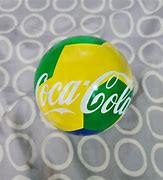
We're doing our best to make sure our content is useful, accurate and safe.If by any chance you spot an inappropriate comment while navigating through our website please use this form to let us know, and we'll take care of it shortly.
Create an account for 500 free characters of AI machine translation every month.
It takes only 1 minute.
A blacksmith is a Metalsmith who creates objects from wrought iron or steel by forging the metal by using tools to hammer, bend, and cut. Blacksmiths produce objects such as gates, grilles, railings, light fixtures, furniture, sculpture, tools, agricultural implements, decorative and religious items, cooking utensils, and weapons. Despite common usage, the person who shoes horses is a farrier. Many farriers have carried out both trades, but most modern or engineering smiths do not.
A blacksmith is a metalsmith who creates objects primarily from wrought iron or steel, but sometimes from other metals, by forging the metal, using tools to hammer, bend, and cut (cf. tinsmith). Blacksmiths produce objects such as gates, grilles, railings, light fixtures, furniture, sculpture, tools, agricultural implements, decorative and religious items, cooking utensils, and weapons. There was an historical distinction between the heavy work of the blacksmith and the more delicate operation of a whitesmith, who usually worked in gold, silver, pewter, or the finishing steps of fine steel. The place where a blacksmith works is called variously a smithy, a forge or a blacksmith's shop. While there are many people who work with metal such as farriers, wheelwrights, and armorers, in former times the blacksmith had a general knowledge of how to make and repair many things, from the most complex of weapons and armor to simple things like nails or lengths of chain.
We're doing our best to make sure our content is useful, accurate and safe.If by any chance you spot an inappropriate comment while navigating through our website please use this form to let us know, and we'll take care of it shortly.
We're doing our best to make sure our content is useful, accurate and safe.If by any chance you spot an inappropriate comment while navigating through our website please use this form to let us know, and we'll take care of it shortly.
a sweet yellow liquid produced by bees
a beloved person; used as terms of endearment
of something having the color of honey
A viscous, sweet fluid produced from plant nectar by bees. Often used to sweeten tea or to spread on baked goods.
A variety of this substance.
Something sweet or desirable.
A woman, especially an attractive one.
Describing a thing involving or resembling honey.
A spectrum of pale yellow to brownish-yellow colour, like that of most types of honey.
Honey is a sweet food made by bees using nectar from flowers. The variety produced by honey bees is the one most commonly referred to, as it is the type of honey collected by beekeepers and consumed by humans. Honey produced by other bees and insects has distinctly different properties. Honey bees transform nectar into honey by a process of regurgitation and evaporation. They store it as a primary food source in wax honeycombs inside the beehive. Honey gets its sweetness from the monosaccharides fructose and glucose, and has approximately the same relative sweetness as that of granulated sugar. It has attractive chemical properties for baking and a distinctive flavor that leads some people to prefer it over sugar and other sweeteners. Most microorganisms do not grow in honey because of its low water activity of 0.6. However, honey sometimes contains dormant endospores of the bacterium Clostridium botulinum, which can be dangerous to infants, as the endospores can transform into toxin-producing bacteria in infants' immature intestinal tracts, leading to illness and even death. Honey has a long history of human consumption, and is used in various foods and beverages as a sweetener and flavoring. It also has a role in religion and symbolism. Flavors of honey vary based on the nectar source, and various types and grades of honey are available. It is also used in various medicinal traditions to treat ailments. The study of pollens and spores in raw honey can determine floral sources of honey. Bees carry an electrostatic charge whereby they attract other particles in addition to pollen, which become incorporated into their honey; the honey can be analysed by the techniques of melissopalynology in area environmental studies of radioactive particles, dust and particulate pollution.
Honey is a sweet and viscous substance made by several bees, the best-known of which are honey bees. Honey is made and stored to nourish bee colonies. Bees produce honey by gathering and then refining the sugary secretions of plants (primarily floral nectar) or the secretions of other insects, like the honeydew of aphids. This refinement takes place both within individual bees, through regurgitation and enzymatic activity, as well as during storage in the hive, through water evaporation that concentrates the honey's sugars until it is thick and viscous. Honey bees stockpile honey in the hive. Within the hive is a structure made from wax called honeycomb. The honeycomb is made up of hundreds or thousands of hexagonal cells, into which the bees regurgitate honey for storage. Other honey-producing species of bee store the substance in different structures, such as the pots made of wax and resin used by the stingless bee.Honey for human consumption is collected from wild bee colonies, or from the hives of domesticated bees. The honey produced by honey bees is the most familiar to humans, thanks to its worldwide commercial production and availability. The husbandry of bees is known as beekeeping or apiculture, with the cultivation of stingless bees usually referred to as meliponiculture. Honey is sweet because of its high concentrations of the monosaccharides fructose and glucose. It has about the same relative sweetness as sucrose (table sugar). One standard tablespoon (15 mL) of honey provides around 190 kilojoules (46 kilocalories) of food energy. It has attractive chemical properties for baking and a distinctive flavor when used as a sweetener. Most microorganisms cannot grow in honey and sealed honey therefore does not spoil. Samples of honey discovered in archaeological contexts have proven edible even after thousands of years. Honey use and production has a long and varied history, with its beginnings in prehistoric times. Several cave paintings in Cuevas de la Araña in Spain depict humans foraging for honey at least 8,000 years ago. While Apis melifera is an Old World insect, large-scale meliponiculture of New World stingless bees has been practiced by Mayans since pre-Columbian times.
We're doing our best to make sure our content is useful, accurate and safe.If by any chance you spot an inappropriate comment while navigating through our website please use this form to let us know, and we'll take care of it shortly.
the quality or state of the achromatic color of least lightness (bearing the least resemblance to white)
total absence of light
"they fumbled around in total darkness"; "in the black of night"
British chemist who identified carbon dioxide and who formulated the concepts of specific heat and latent heat (1728-1799)
popular child actress of the 1930's (born in 1928)
a person with dark skin who comes from Africa (or whose ancestors came from Africa)
(board games) the darker pieces
black clothing (worn as a sign of mourning)
"the widow wore black"
being of the achromatic color of maximum darkness; having little or no hue owing to absorption of almost all incident light
"black leather jackets"; "as black as coal"; "rich black soil"
of or belonging to a racial group having dark skin especially of sub-Saharan African origin
"a great people--a black people--...injected new meaning and dignity into the veins of civilization"- Martin Luther King Jr.
marked by anger or resentment or hostility
"black looks"; "black words"
offering little or no hope
"the future looked black"; "prospects were bleak"; "Life in the Aran Islands has always been bleak and difficult"- J.M.Synge; "took a dim view of things"
stemming from evil characteristics or forces; wicked or dishonorable
"black deeds"; "a black lie"; "his black heart has concocted yet another black deed"; "Darth Vader of the dark side"; "a dark purpose"; "dark undercurrents of ethnic hostility"; "the scheme of some sinister intelligence bent on punishing him"-Thomas Hardy
(of events) having extremely unfortunate or dire consequences; bringing ruin
"the stock market crashed on Black Friday"; "a calamitous defeat"; "the battle was a disastrous end to a disastrous campaign"; "such doctrines, if true, would be absolutely fatal to my theory"- Charles Darwin; "it is fatal to enter any war without the will to win it"- Douglas MacArthur; "a fateful error"
(of the face) made black especially as with suffused blood
"a face black with fury"
"a black moonless night"; "through the pitch-black woods"; "it was pitch-dark in the cellar"
harshly ironic or sinister
"black humor"; "a grim joke"; "grim laughter"; "fun ranging from slapstick clowning ... to savage mordant wit"
(of intelligence operations) deliberately misleading
distributed or sold illicitly
"the black economy pays no taxes"
(used of conduct or character) deserving or bringing disgrace or shame
"Man...has written one of his blackest records as a destroyer on the oceanic islands"- Rachel Carson; "an ignominious retreat"; "inglorious defeat"; "an opprobrious monument to human greed"; "a shameful display of cowardice"
(of coffee) without cream or sugar
soiled with dirt or soot
"with feet black from playing outdoors"; "his shirt was black within an hour"
"The smoke blackened the ceiling"; "The ceiling blackened"
The colour/color perceived in the absence of light.
A black dye, pigment.
A pen, pencil, crayon, etc., made of black pigment.
Black cloth hung up at funerals.
A person of African descent, Aborigine or Maori.
The edge of home plate
a type of firecracker that is really more dark brown in colour.
blackcurrant syrup (in mixed drinks, e.g. snakebite and black, cider and black).
To make black, to blacken.
To apply blacking to something.
To boycott something or someone, usually as part of an industrial dispute.
In chess and similar games, the person playing with the black set of pieces.
absorbing all light and reflecting none; dark and colourless.
Relating to persons of (usually noticeable) negroid African descent or their culture. Also people of Aborigine or Maori descent.
Bad; evil; ill-omened.
Illegitimate, illegal or disgraced.
Without any cream, milk or creamer.
The standard denomination of the playing pieces of a board game deemed to belong to the "black" set, no matter what the actual colour.
Related to the Christian Democratic Union.
Black is the color of coal, ebony, and of outer space. It is the darkest color, the result of the absence of or complete absorption of light. It is the opposite of white and often represents darkness in contrast with light. Black was one of the first colors used by artists in neolithic cave paintings. In the Roman Empire, it became the color of mourning, and over the centuries it was frequently associated with death, evil, witches and magic. In the 14th century, it began to be worn by royalty, the clergy, judges and government officials in much of Europe. It became the color worn by English romantic poets, businessmen and statesmen in the 19th century, and a high fashion color in the 20th century. In the Western World today, it is the color most commonly associated with mourning, the end, secrets, magic, power, violence, evil, and elegance.
Black is a color which results from the absence or complete absorption of visible light. It is an achromatic color, without hue, like white and gray. It is often used symbolically or figuratively to represent darkness. Black and white have often been used to describe opposites such as good and evil, the Dark Ages versus Age of Enlightenment, and night versus day. Since the Middle Ages, black has been the symbolic color of solemnity and authority, and for this reason is still commonly worn by judges and magistrates.Black was one of the first colors used by artists in neolithic cave paintings. It was used in ancient Egypt and Greece as the color of the underworld. In the Roman Empire, it became the color of mourning, and over the centuries it was frequently associated with death, evil, witches and magic. In the 14th century, it was worn by royalty, clergy, judges and government officials in much of Europe. It became the color worn by English romantic poets, businessmen and statesmen in the 19th century, and a high fashion color in the 20th century. According to surveys in Europe and North America, it is the color most commonly associated with mourning, the end, secrets, magic, force, violence, evil, and elegance.Black ink is the most common color used for printing books, newspapers and documents, as it provides the highest contrast with white paper and thus is the easiest color to read. Similarly, black text on a white screen is the most common format used on computer screens. As of September 2019, the darkest material is made by MIT engineers from vertically aligned carbon nanotubes.
We're doing our best to make sure our content is useful, accurate and safe.If by any chance you spot an inappropriate comment while navigating through our website please use this form to let us know, and we'll take care of it shortly.
We're doing our best to make sure our content is useful, accurate and safe.If by any chance you spot an inappropriate comment while navigating through our website please use this form to let us know, and we'll take care of it shortly.























